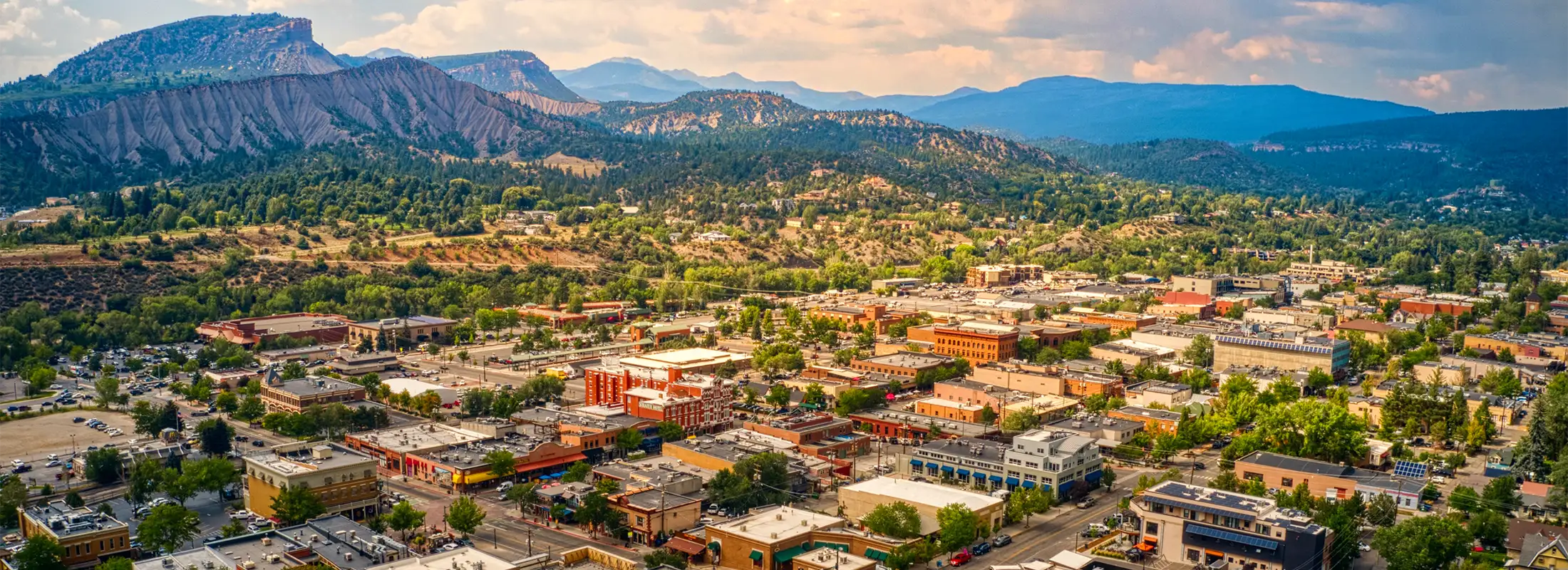
Durango has a rich and wild history.
The City of Durango is a "railroad town," founded by the Denver & Rio Grande Railroad when it sought to build a track to Silverton to facilitate shipment of the plentiful ore from the mountains to the smelter down the valley, and ultimately to outside markets. The red rocks rimming the Animas Valley still speak to the mineral rich resources in the San Juan Mountains.

Animas City was established in the valley previous to Durango, as the valley allowed for a thriving agricultural economy. But the railroad was unable to make a deal to build a depot in Animas City, so in 1880, General William J. Palmer, president of the railroad, along with William A. Bell and John A. Porter, formed the Durango Trust for the purpose of buying land and selling property for the proposed town site of Durango – a mere two miles south of Animas City.
The original plan was an efficient grid of streets, surveyed by civil engineer Charles Perin, with the wholesale enterprises near the railroad (now Main Ave.), E. 2nd Ave. designated as the business district, and the residential properties located upslope (E. 3 rd Ave.) and away from the commerce, "with a mountain view." This grid remains intact today, with the historic residential district and Downtown Durango reflecting the Victorian heritage of the town. Animas City, now called Uptown Main, was eventually incorporated into Durango.

Local historian Duane Smith recounts in his book Rocky Mountain Boom Town, that in the early 1880s, some 2,000 settlers poured into the area in response to a newspaper advertisement hailing Durango as the "New Denver of the Southwest." By 1881, 134 businesses had already opened their doors, including at least 20 saloons.
The lands throughout the Four Corners were, however, originally inhabited by the Ancestral Puebloans, with the Southern Ute Indian Tribe, descendants, carrying on the Native American heritage in La Plata County today.
The Spanish explorers of those earlier decades were the ones to christen many of the rivers and mountains they found on their journeys through the region. Central to Durango is the Animas River - originally Rio de las Animas Perdidas, or the River of Lost Souls. The explorers named the river after those who were lost to the river, their bodies never found. As last rites could not be administered, and since the explorers were devoted Catholics, they believed the dead men's souls could not enter heaven and would be relegated to Purgatory. This legend endures in the name of the local ski mountain, Purgatory Resort.
Durango's architectural heritage is visible along Main Ave. Visit here for a walking tour of Downtown Durango's living history. Plus, visit the Animas Museum to learn more about Durango's rich heritage. Horsefly History Tours offer guided walking tours and haunted Durango ghost walking tours.
